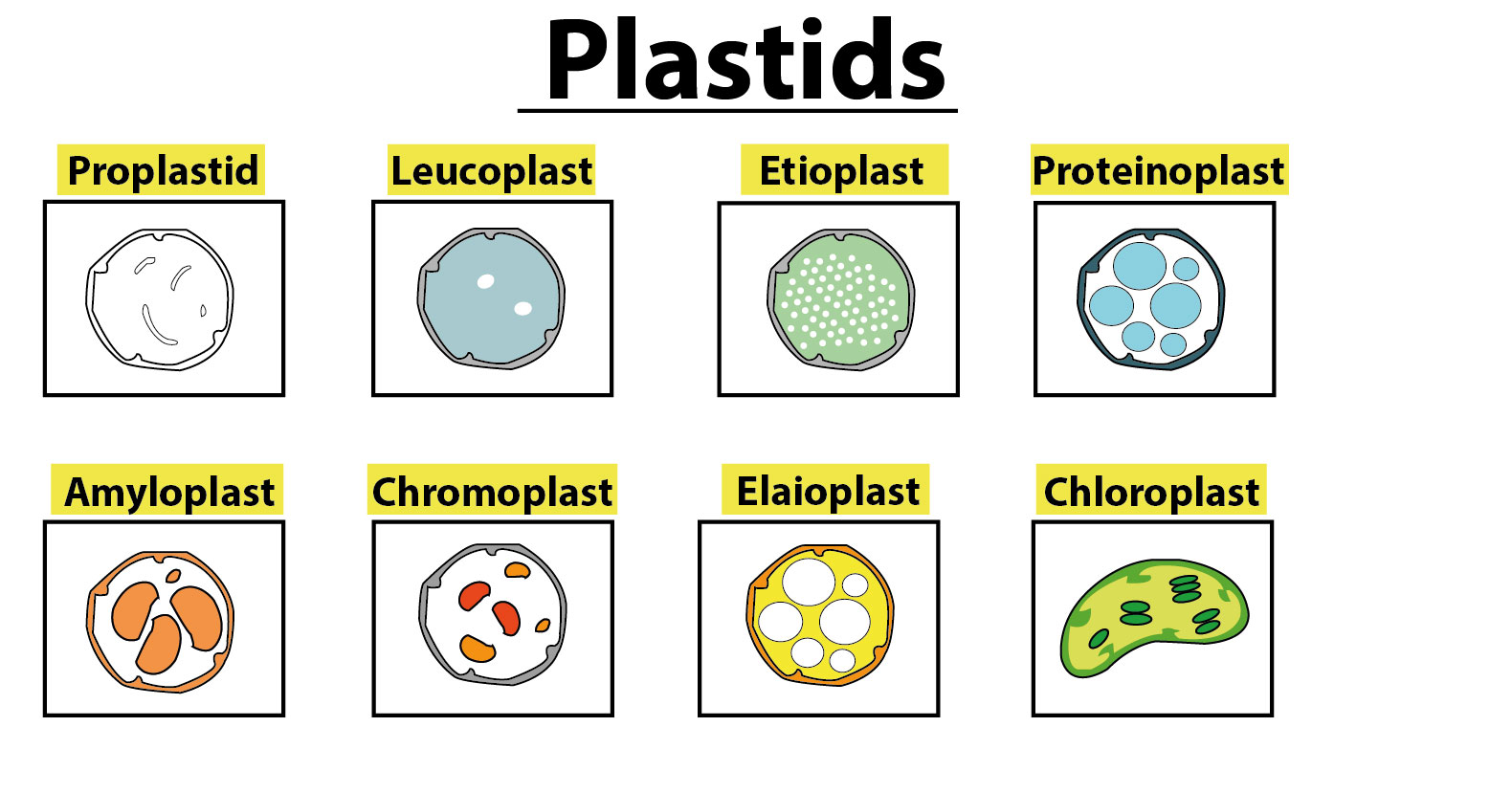
The proplastids forms a colourless plastid called as
A. Amyloplasts
B. Aleuroplasts
C. Elaioplasts
D. All of the above
Answer
494.7k+ views
2 likes
Hint: A small, colourless organelle that gives rise to a plastid is called a protoplast. The protoplastid is an immature plastid that is incapable of photosynthesis or any other function like storage. Protoplatid matures and forms the plastids.
Complete answer:
A plastid that does not contain any pigments is called leucoplast, and it is involved mainly in storing food. The leucoplasts are classified into three types: an amyloplast that stores starch, an elaioplast that stores fat, or an aleuroplast that stores proteins.
Additional Information: A proplastid is observed in the meristematic regions of the plant. It is still undivided and may develop to produce more proplastids. As the proplastids mature, the proplastids transform and form various plastids with specialized functions such as:
-Plastids with chlorophyll (green pigment) are called chloroplasts. They give the plant parts the green colour. These plastids are involved in photosynthesis.
-Those that have other pigments are called chromoplasts. They are involved in producing and storing pigments, e.g. carotene, xanthophylls, etc. They abound in fruits, flowers, and roots.
- The leucoplast is a plastid that lacks pigments and is involved mainly for storing food. Tannosomes are also a type of leucoplasts which are involved in the synthesis of tannins and polyphenols.

Hence the correct answer is 'all of the above'.
Note: Like mitochondria, plastids have their own DNA and ribosomes. Plastid DNA appears as large protein-DNA complexes united with the inner envelope membrane and are termed 'plastid nucleoids'. Each nucleoid may comprise more than 10 copies of the plastid DNA. The proplastid comprises a single nucleoid positioned in the centre of the plastid. Hence, they may be used in phylogenetic studies.
Complete answer:
A plastid that does not contain any pigments is called leucoplast, and it is involved mainly in storing food. The leucoplasts are classified into three types: an amyloplast that stores starch, an elaioplast that stores fat, or an aleuroplast that stores proteins.
Additional Information: A proplastid is observed in the meristematic regions of the plant. It is still undivided and may develop to produce more proplastids. As the proplastids mature, the proplastids transform and form various plastids with specialized functions such as:
-Plastids with chlorophyll (green pigment) are called chloroplasts. They give the plant parts the green colour. These plastids are involved in photosynthesis.
-Those that have other pigments are called chromoplasts. They are involved in producing and storing pigments, e.g. carotene, xanthophylls, etc. They abound in fruits, flowers, and roots.
- The leucoplast is a plastid that lacks pigments and is involved mainly for storing food. Tannosomes are also a type of leucoplasts which are involved in the synthesis of tannins and polyphenols.

Hence the correct answer is 'all of the above'.
Note: Like mitochondria, plastids have their own DNA and ribosomes. Plastid DNA appears as large protein-DNA complexes united with the inner envelope membrane and are termed 'plastid nucleoids'. Each nucleoid may comprise more than 10 copies of the plastid DNA. The proplastid comprises a single nucleoid positioned in the centre of the plastid. Hence, they may be used in phylogenetic studies.
Recently Updated Pages
Master Class 11 Economics: Engaging Questions & Answers for Success

Master Class 11 Business Studies: Engaging Questions & Answers for Success

Master Class 11 Accountancy: Engaging Questions & Answers for Success

Master Class 11 English: Engaging Questions & Answers for Success

Master Class 11 Computer Science: Engaging Questions & Answers for Success

Master Class 11 Maths: Engaging Questions & Answers for Success

Trending doubts
State and prove Bernoullis theorem class 11 physics CBSE

What are Quantum numbers Explain the quantum number class 11 chemistry CBSE

Write the differences between monocot plants and dicot class 11 biology CBSE

Why is steel more elastic than rubber class 11 physics CBSE

Explain why a There is no atmosphere on the moon b class 11 physics CBSE

1 ton equals to A 100 kg B 1000 kg C 10 kg D 10000 class 11 physics CBSE




